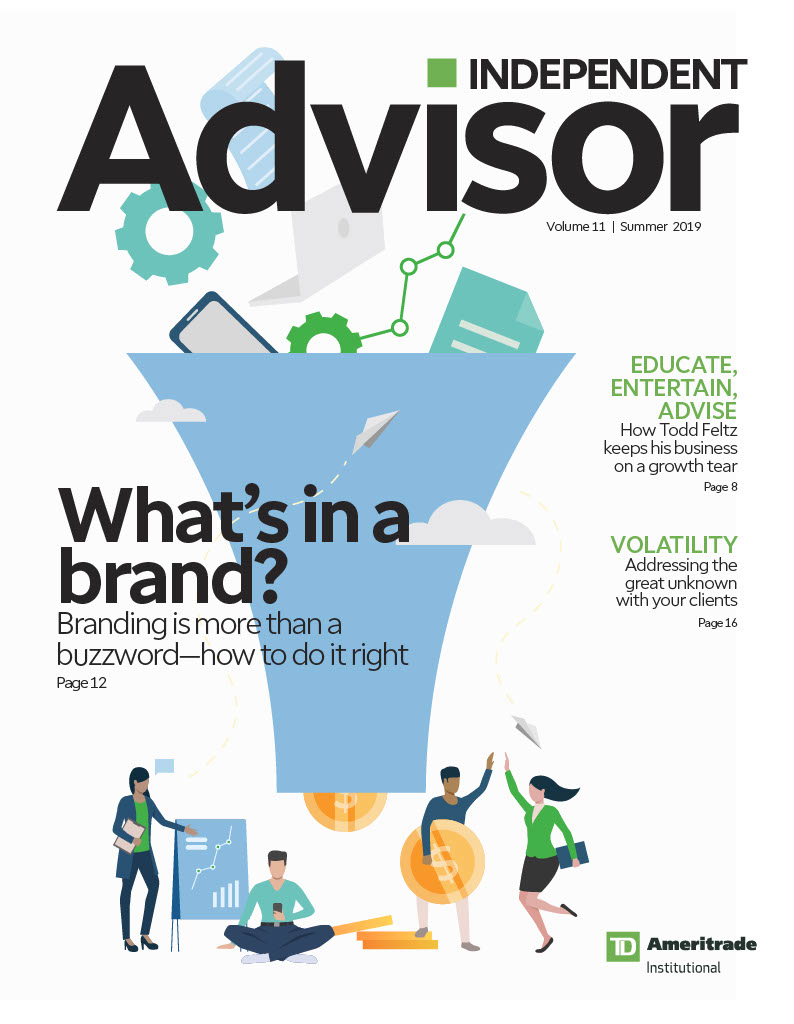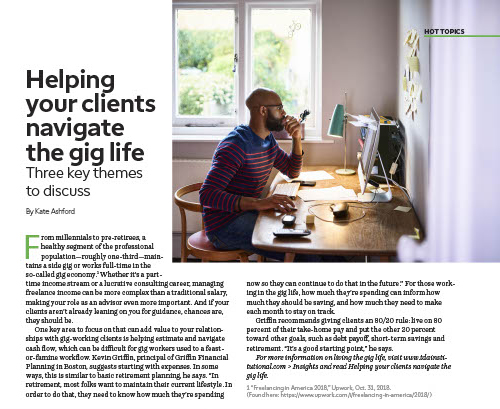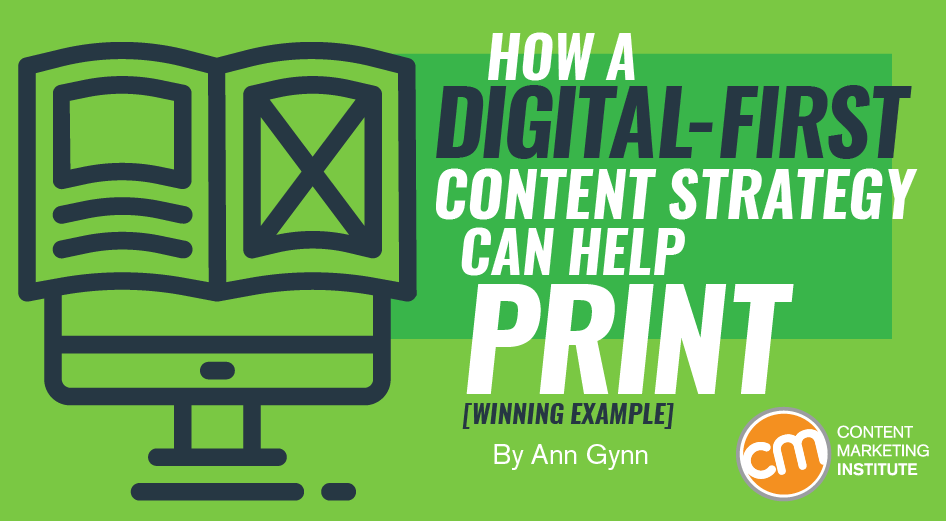
A digital-first content marketing strategy doesn’t mean digital only.
That’s the lesson from TD Ameritrade Institutional (TDAI) and its content agency, Imagination, which were recognized as the Best Content Marketing Program in Financial Services by the 2020 Content Marketing Awards. (TD Ameritrade was acquired by Schwab in fall 2020.)
TDAI’s digital-first content marketing strategy is driven by first- and third-party research, along with data from SEO learnings and performance results. It’s designed to:
- Drive organic search traffic
- Foster deeper engagement with prospects and clients
- Establish TDAI as a thought leader on topics of concern to prospects and clients
- Drive sales leads in this niche space of financial advisors and those who aspire to be advisors
The content mix encompasses digital articles, infographics, and podcasts, plus a quarterly print magazine called Independent Advisor.
The digital-first #contentmarketing strategy at @TDA4advisors includes a #print magazine the company believes in, says Simona Covel of @Contentimagine via @CMIContent @AnnGynn. Click To Tweet“TDAI had a magazine they believed in and knew resonated with their audience of registered investment advisors,” says Simona Covel, senior vice president of content at Imagination. Imagination worked with TDAI to launch the digital-first strategy, which included relaunching the print magazine and using digital data to guide the print content.
HANDPICKED RELATED CONTENT:
By the numbers and more
To decide whether an online article will be included in a print issue, the team reviews three months of the standard digital data points story – time on page, number of visitors, and engagement percentage.
“This approach is both effective and creative. Digital assets that come to life via audio, video, or animation are reimagined for print, and the print publication promotes further engagement on the content hub,” according to Imagination’s CMA entry.
But Imagination and TDAI know the numbers don’t tell the whole story. Content promotion, site placement, timeliness or seasonality, and other user interface elements affect the digital results.
The data is merely the starting point. The team also considers the differences between print and digital readerships, the topics readers ask for over and over, and the business objectives to create a compelling magazine.
Going to print
The print magazine reaches a narrower audience – current advisors – while the digital content targets both current and prospective advisors. So the content mix is adapted to the platform.

Each print issue includes a feature article about a TDAI advisor that doesn’t appear on the digital platforms. Headline and subheds, which serve different purposes in print than online, get tweaked or rewritten.
For example, in the magazine’s summer 2019 issue of the magazine (which was submitted for CMA consideration), the feature article is the same in print and online, but the headlines vary. The digital simply states: “What’s in a brand?” But the print issue adds a subhead: “Branding is more than a buzzword—how to do it right.”
The graphics also are different, though they keep the same tone and feel.
Unlike digital’s lack of space constraints, the content must fit in the print package – 24 pages plus cover. Each issue of Independent Advisor includes three feature stories – two of which appeared online. It also recasts relevant digital content to fit into the departments and other front- and back-of-book sections, Simona says.
Unlike with digital, print #content is limited by the number of pages available, notes Simona Covel of @HowDoYouConnect. Digital performance guides decisions about what makes it into each issue, via @CMIContent @AnnGynn. Click To TweetThe article Helping your clients navigate the gig life, for example, is more than 1,300 words long on the digital platform. For print, it was cut to about 275 words and it functioned as a teaser to the online version:

The Imagination team, as TDAI’s content agency, is often involved in the digital content but always handles the updates of the content for print. “Because we have a view into the entire magazine and the story we’re trying to tell through the issue, we are in the best position to make the necessary tweaks,” Simona says.
Getting the print out
The total process – from presenting the high-level content plan to the press check at the printer – takes about 3.5 months.
The magazine is mailed to TDAI advisors’ offices. In 2019, for the first time, a special edition of the magazine was distributed at LINC, TDAI’s massive annual event for advisors.
Not only did it work well as a replacement for the conference guide, but it also attracted attention from advisors who hadn’t seen it in their mailboxes – either because they weren’t on the distribution list or because their office received only one copy.
“We often think of meeting people where they are as a digital strategy,” Simona says, “but it holds true for print too. If your audience is gathered at a conference or event (someday we’ll be back to normal), why not apply the same ‘be-where-they-are’ thinking?”
Cautionary advice
While turning digital engagement into print insights is a good idea, it’s not always straightforward.
“The human element is essential here: Someone who understands not just the program but also has a deep understanding of the audience needs to take a long, hard look at the data and layer that perspective on top of the results, given all of the contributors to performance,” Simona says. “The data have to be meaningful, the audience has to be reliable, and the analysis has to be critical.”
As part of a new blog series, Content Marketing Institute is going behind the scenes to talk to some award winners and finalists about aspects of their work that stood out from their content competitors. Are there winning entries you’d like to learn more about? Want to share the story behind your victory? Contact us at CMI_Info@Informa.com.
Cover image by Joseph Kalinowski/Content Marketing Institute

